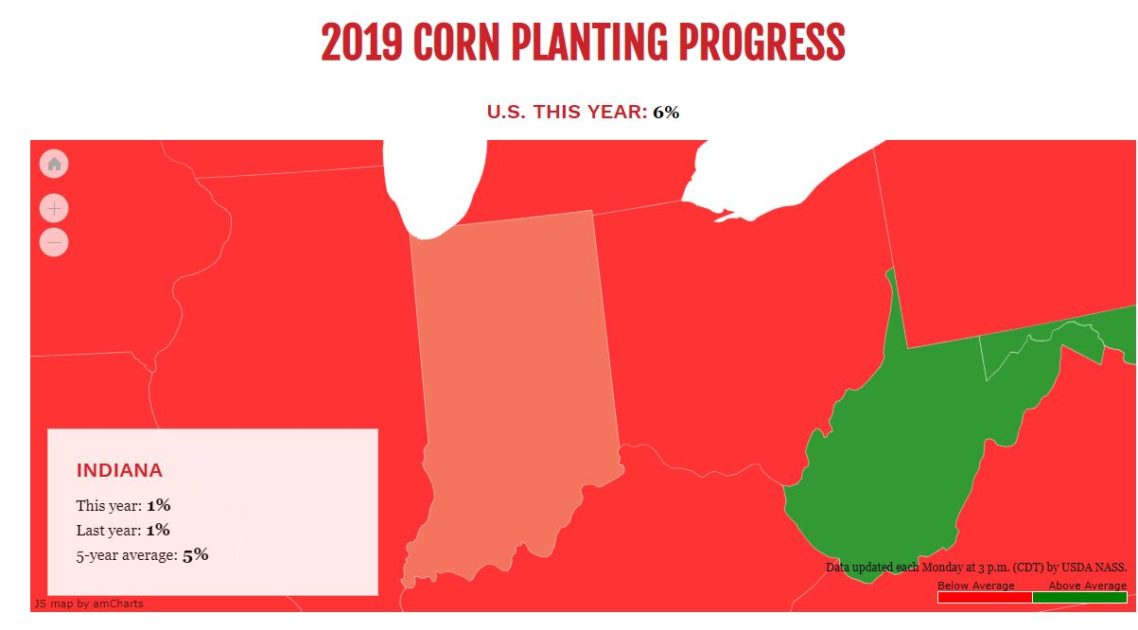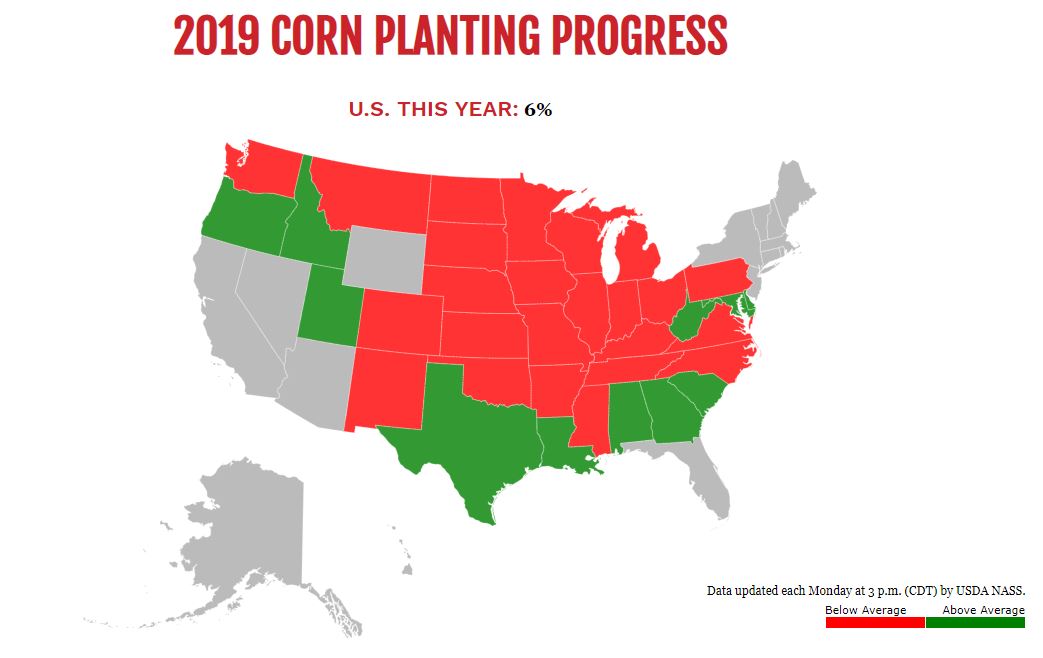Corn Planting Progress & Tips

May is nearly upon us, and a lot of corn seed is still in the bag. According to USDA, the US average of 2019 corn planting progress is 6%, and Indiana’s 2019 corn planting progress average is 1%, which is the exact same as last year. The moral of the story is: don’t panic. It may be a good idea to practice optimal management practices this year before hitting the field corn-planting practices.

DTN has five top tips for managing a late-planted corn crop:
1) TILLAGE AND PLANTING
If an extensive tillage program is still standing between you and your corn planter, it might be time to consider skipping or simplifying it. Try to focus on minimizing soil disturbance and soil compaction as it simply delays planting even further. If you must do tilling, try to limit it to rut repairs.
Don’t “mud-in” your crop. Yield reductions resulting from ‘mudding the seed in’ are usually much greater than those resulting from a slight planting delay. The soil compaction that comes along with it can produce sidewall compaction and stunted root systems, which leave plants vulnerable to dry spells.
2) FERTILITY
If you don’t have a week to spare between an anhydrous nitrogen application and you have the right equipment, consider switching to starter fertilizer at planting along with a side-dressing pass at V4 to V6. Remember that a lot of corn symptoms associated with nutrient deficiencies, such as purpling, are more often the result of poor root systems due to cold, wet conditions.
3) HYBRID MATURITY
It’s still too early to worry about switching to an earlier maturing corn hybrid. Only if planting gets pushed into late May and early June should growers even consider switching. Data from Purdue University suggests the same.
4) SEEDING DEPTH AND RATE
Superior Ag recommends 1.75-to-2-inch planting depth, regardless of your planting date. If planted any shallower, it can hinder root development. Erratic stands are more prominent with shallow planting. The topmost layer of soil is subject to way too much temperature and moisture fluctuations to be safe for a corn seedling.
5) INSECTS TO WATCH
Late-planted corn will be younger and more susceptible when certain insects come calling, namely lepidopteran pests such as European corn borer, corn earworm, western bean cutworm and fall armyworm.